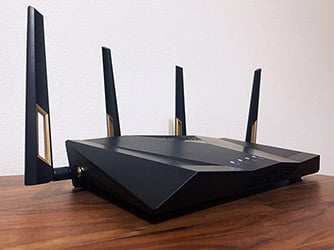this post was submitted on 17 Jan 2024
66 points (93.4% liked)
Technology
61344 readers
3652 users here now
This is a most excellent place for technology news and articles.
Our Rules
- Follow the lemmy.world rules.
- Only tech related content.
- Be excellent to each other!
- Mod approved content bots can post up to 10 articles per day.
- Threads asking for personal tech support may be deleted.
- Politics threads may be removed.
- No memes allowed as posts, OK to post as comments.
- Only approved bots from the list below, to ask if your bot can be added please contact us.
- Check for duplicates before posting, duplicates may be removed
- Accounts 7 days and younger will have their posts automatically removed.
Approved Bots
founded 2 years ago
MODERATORS
you are viewing a single comment's thread
view the rest of the comments
view the rest of the comments

It depends on the brand since very few allow the user to properly configure and control the mesh system. Then again, there’s AiMesh available.
TP-Link (and I think even ubiquiti?) allow the WAPs to be used in both standalone and mesh mode. The pricing required for meshing means a standalone WAP is dirt cheap.
And the standalone plays well with any router.
Even entertaining the idea of buying an all in one "router" at this point is comparable to buying a prebuilt PC. If all you need is something that works, they can be a good choice. But for anyone who would know how to interpret performance numbers you are a lot better off building it yourself (or slipping microcenter a 20). Same here. I think it is pfsense that even sell theirs preinstalled on pretty decent hardware (that you can then reformat for opnsense...).
Oh, I wholeheartedly agree. But I don’t think we’ll manage to convince many people, outside the tech enthusiasts that this is the best way for good WiFi.
I am more interested whether the testing methodology is good enough and clear. I can apply it to multi node systems, as well as wireless APs.
Noted.